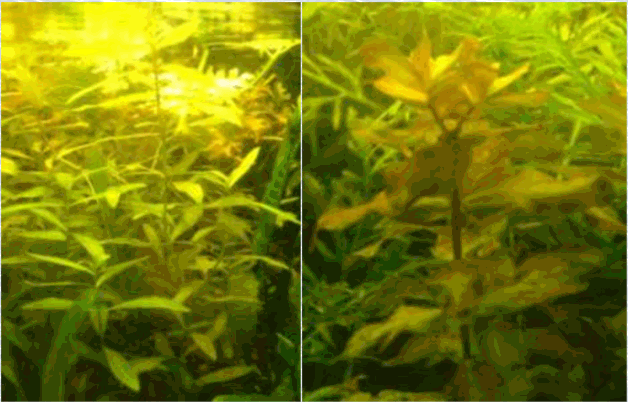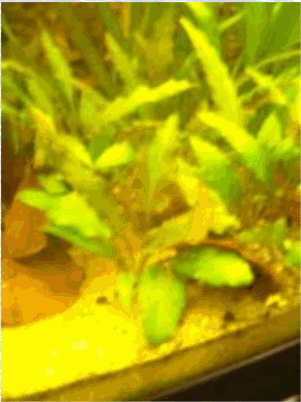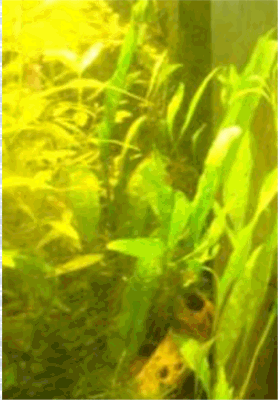Aquarium plants and planting, plants types, pet fish, aquaria, stemmed plants, rosette plants, Vallis and swords,floating plants, Light, CO2, filtration and other accessories, plant growth, plant food, aquarium tank, aquarium water
Aquarium plants and planting
Author: Jim Burnett
Stemmed plants: These can have several leaves, pairs of leaves or single, alternate leaves growing along a stem. They are probably the easiest plants to grow and can be large and fast growing. Leaf nodes, where the leaf joins the stem, can produce leaves, roots or new shoots. Simply snap the stem, plant it with at least one node buried and you have a new plant. The original plant will then grow a new shoot, or shoots, from the top node on the remaining stem. One of the commonest, Cabomba can reach 6m. in length if it has the space and can grow visibly in a day.

Rosette plants: These plants grow from a crown in or around the gravel bed. Each leaf grows directly from this crown. There are several types of rosette plants. These include Vallis, a grass like plant, Amazon swords, Cryptocorynes, Aponatogens and Nympheas or lilies. Vallis, swords and crypts spread by throwing off runners with young plants growing along them. When these plants reach a big enough size they can be separated from the 'mother' plant. Vallis and swords (echinodorus) need to be planted with the crown above the gravel surface; crypts need to have the crown buried. Aponatogens and nympheas grow from tubers. The plant can be removed from the tuber and a new plant will grow again. Some of these plants look good as individual specimen plants standing out against a background of stemmed plants. Contrast leaf shapes, sizes and/or colours.
Mosses, ferns and runners: There are only a few aquarium plants in this group but they are easily available, adaptable and useful. The commonest are Java fern, Microsorium pterops and Java moss, Vesicularia dubyana. Another plant, which is often featured by Takashi Amano in his tanks, is Glossostigma elantoides. This plant produces single leaves along the length of the runner but with enough light it will produce a thick carpet of cover over the aquarium gravel. Java moss and java fern can be grown on rocks or wood. Tie them on with black cotton initially and they will soon attach themselves by their own roots. Java fern can be grown on gravel provided only the roots are buried. The rhizome or stem must be above the gravel surface.
Floating plants: There are a variety of floating plants available. They can be very useful as nitrate reducers. They tend to be fast growing and can provide useful shade for fish like Discus that do not appreciate bright light. They also provide good nest building sites for bubble nesters like Gouramis. Please, for your own sanity, avoid Duckweed. This is less a floating plant, more a floating plague.
Light, CO2, filtration and other accessories: Sufficient light is an essential for good plant growth. I find that one florescent tube the length of the tank for each 6" of tank width is sufficient, i.e. two tubes for a 12" wide tank, 3 for 18" etc. Deeper tanks require more light. Fitting reflectors to the lamps helps but over 18" deep really needs mercury vapour lamps. These are cheaper than the metal halides used for marines but slightly more expensive initially than florescents. They are also very good over open topped tanks. With an open top you can encourage many plants to grow up out of the water where some of them will flower, adding another dimension to your aquarium.
Co2 is plant food. Plants combine CO2 with other nutrients in the water to produce sugars and tissues. A by-product of this photosynthesis is oxygen. The oxygen produced in a planted aquarium is more than sufficient for the fish in the tank. There are a number of commercial CO2 units available which dissolve the gas in the aquarium water. The amount of CO2 required varies according to the plant demand and the hardness of the water. Soft water needs much less than hard. In very soft water areas, like here in Aberdeen, I get reasonable plant growth with no additional CO2. Even so the addition of CO2 turns the plant growth from reasonable to spectacular.
Filtration for a planted tank should be slower than for a normal tank, no more than 1-1.5 times the tank volume/hour. External or internal power filters are good. I like to use a larger filter with the return slowed down. CO2 is easily bubbled off in gas exchange at the surface so set the filter return about 4" below the surface. Air driven filters or bubbles are not a good idea.
Substrate/plant food. Laterite clay is a very useful addition to the substrate as it feeds the roots of the plants. Use a fairly deep gravel bed, min.2", to allow for good root growth, particularly for plants like sword plants and crypts. 4-6" is nor too much for some of the larger specimens. Again there are several commercial substrates available. If you use one then try to get one that has a whole system built round it. Each manufacturer adds different trace elements to their substrate and then balances this with other nutrients in their liquid or tablet plant foods. If you try to mix and match you may find you are overdosing one element while starving plants of another. Some of these systems are fairly expensive. While they do give good results it is worth shopping around.
Under gravel heating cables. These low power cables are used to encourage a very slow flow of water and nutrients around the plant roots. Many plants enjoy having their feet warm. An additional benefit of this slow circulation is that the gravel bed becomes a very efficient slow biological filter. Some manufacturers make an external thermostat which controls two heaters, one a cable heater and the other a water heater. This gives preference to the UG cable with the other heater as back up if it gets really cold. I achieve the same effect with a heater/stat set at 75F and a UG cable controlled by an external Stat set at 77F.
Content by courtesy of:

Home | Dogs | Cats | Birds | Fish and aquariums | Ferret | Small pet | Free classified ads | Photos | Videos | Articles
Directory | Pet books | Dog books | Cat books | Bird books | Aquarium books | Ferret books | Small pet books




